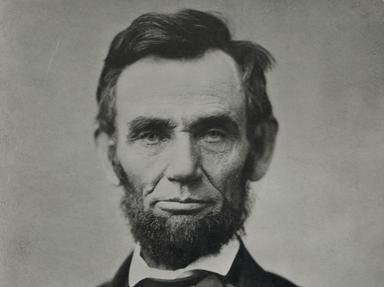Quiz Answer Key and Fun Facts
1. Abraham Lincoln was shot on what holiday?
2. Lincoln was shot and killed by a man named John Wilkes Booth. What was Booth's profession?
3. Lincoln was shot in the Presidential Box at Ford's Theater in Washington, DC during a performance of the comedy "Our American Cousin," starring Harry Hawk and Laura Keene. Besides his wife, Mary, who else was in the Presidential Box at the time?
4. Although Lincoln was the only person killed that night, two other important figures were marked for assassination by Booth's gang of conspirators. Who were they?
5. After shooting Lincoln, Booth jumped from the Presidential Box onto the stage; he was wearing riding spurs, which caught on a flag, causing him to land awkwardly, and fracture a bone in his left leg. He stood up, and shouted something. What was it?
6. Lincoln did not die immediately. He was carried out of the theater to a boarding house across the street. He was laid out upon a bed there while doctors continued to attend to him. What was unusual about the bed that Lincoln was to die in?
7. Booth and his accomplice, David Herold, fled Washington, DC and headed south. Despite a nationwide manhunt, how long did Booth stay at large before he was found?
8. After his death, Abraham Lincoln's body lay in state, first in the East Room of the White House, and later in the Capitol Rotunda. On April 21 his coffin was loaded onboard a special train, which stopped in 11 cities on the way to his final resting place. Where was Lincoln finally buried?
9. How many of John Wilkes Booth's co-conspirators were executed for their part in the Lincoln assassination?
10. Who was Samuel J. Seymour, and what is his connection with Lincoln's assassination?
Source: Author
daver852
This quiz was reviewed by FunTrivia editor
stedman before going online.
Any errors found in FunTrivia content are routinely corrected through our feedback system.

